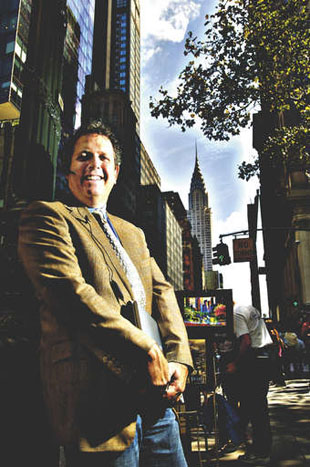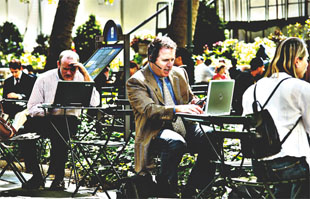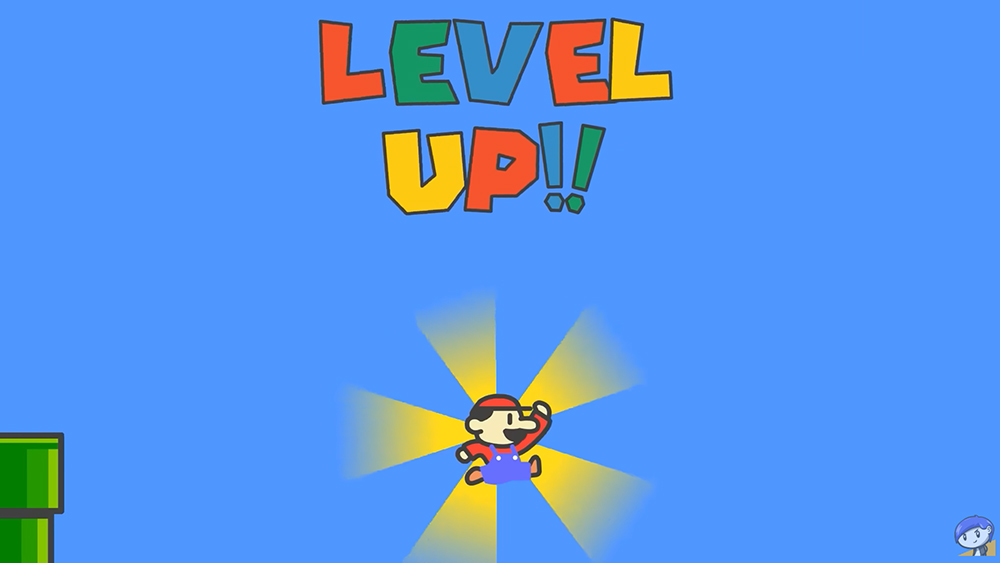Alan Levy
The blogosphere has taken over the web, yet it’s simply the start of what’s possible for people with something to say. Christian Hall talks to Alan Levy, the brains behind BlogTalkRadio – a service that goes beyond Web 2.0 by turning bloggers into broadcasters
Alan Levy looks like the quintessential American entrepreneur: immaculately turned out with a battle-hardened business look and a laptop at the ready. As he sits down in Manhattan’s Wi-Fi-ready Bryant Park on a beautiful autumn morning, he isn’t taking a break from the office – he’s in his office, or recording studio to be more precise, broadcasting to the world using the wonders of wireless technology.
According to Technorati, two new blogs are created every second. Naturally, some of them suck, but there are plenty that make the grade and are visited by millions of people every day. There’s just one big problem: it’s all words! In this era of VoIP technology, blogs already seem outdated, eclipsed by trendy visual phenomena such as YouTube, or social networking sites such as MySpace. Alan Levy decided that the time had come to get interactive and invited bloggers to start talking instead of writing. In July this year, BlogTalkRadio was born – a web app that enables bloggers to host a talk show online, receive live callers, interview guests and broadcast to an unlimited number of listeners for free.
“A couple of years ago, I got into blogs and started following a few on a daily basis. Just reading, posting and working through the blogosphere was amazing; seeing the sheer number of blogs being created,” says Alan. “When I first started looking at this, there were less than five million blogs. There’s now more than 50 million, and it’s growing at something like 100,000 blogs a day.”

Although tech-savvy, Alan couldn’t believe how popular blogs were becoming and was interested in how he could get a slice of the action, which meant exploiting a problem with the way blogs work. “There are some inherent flaws in blogs in that they’re instantly historical – there’s really no interaction between the blogger and their audience. I thought it made tremendous sense if a blogger could communicate more directly with their audience and get instant feedback. They could then promote new ideas through the spoken word rather than the written word and bring more spontaneity to it.” Others may have realised this about blogs some time ago, but seeing as nobody was doing anything about it, Alan decided that he was the man for the job and all he needed was a phone, an internet connection and, of most importance, something to say.
It’s good to talk
BlogTalkRadio bucks the trend of web apps with trendy names that don’t actually describe what the service does, like interactive podcasting site Waxxi. Alan wanted things to be simple, and in a competitive Web 2.0 marketplace, if you spell it out for users (like MySpace does), you won’t go far wrong.
Frankly, about two bloggers out of every million have meaningful traffic and readership
During the development process, Alan kept returning to the idea that blogs were flawed: “The blogosphere is a world of haves and havenots. Frankly, about two bloggers out of every million have meaningful traffic and readership,” he notes. Today’s net-savvy audience are used to having hundreds of internet radio channels stored in their Favourites, so by having an interactive audio element, bloggers are bound to get more general traffic to their existing blogs.
“Also, you never know when a blog is going to be updated,” says Alan. BlogTalkRadio schedules shows so that people can get fresh, interactive content at specific times. Shows are then archived like traditional blog posts. With his entrepreneurial brain working overtime, he settled on interaction being the driving force behind what would make BlogTalkRadio stand out as something novel. “When looking at thousands of blogs, I found that they were highly individualised; written by specific individuals who have specific points of view. Companies don’t blog, people blog, and bloggers all have something to say. To express ideas in a two-way or even three- or five-way fashion is a massive change in how the blogosphere works.”
The way Alan has structured the site is that the host creates an account and has their own host page, which is linked to existing blogs. “People reading blogs can see ads like ‘speak to me live here’, so directly driving traffic from their site to their host channel. People stumble across the blog and start to listen by clicking through, or people find the schedule and make a note to listen in.” Hosts have a display name and people can IM or Skype hosts with questions.

“This is a new level of the social web; a brand new medium; a new space. I believe the interaction between the blogger and listener is an exciting extension of the blogosphere,” Alan says. “I couldn’t decide whether we fitted into the definition of a Web 2.0 company, so I took a definition from Wikipedia and we certainly meet those criteria, yet we’re going much further. I don’t know ... you look at YouTube and MySpace and there’s no live capability. Our platform is – we have all the archiving functions, too. It could well be the start of Web 3.0, but I’ll let others determine that.”
You can have your own blog for free and now your own talk show, but BlogTalkRadio also earns hosts money. Sounds too good to be true? “We share revenue with the host, revenue that’s generated from two places: your page where we advertise, but also on the shows themselves, where we run commercials in certain points during the show,” says Alan. “So, for the first time, it gives the blogger the ability to earn money, which is another element to why we’re more than Web 2.0. Blogs are becoming more professional and ‘full-time’ as each day passes – some bloggers need to be paid.”
A new blogosphere
There’s no denying that interactive broadcast appeals to millions of existing bloggers, and plenty more who have yet to sample the blogosphere for themselves, but is anyone really listening? “Last week, we had about 15,000 shows either listened to live or downloaded,” says Alan Levy. “And that number has doubled each week. “In the first week, we had 376 shows already set up, but what’s also incredible is that they originated from 17 countries: US, Canada, France, Spain, Germany, UK, Belgium, Japan, Korea, Chad, Argentina, Swaziland, Mexico, Turkey, Mauritius and Chile. From all of these, we’ve had completely different genres, from fitness to ancient history, from politics to divorce advice.” So, all walks of life can broadcast blogs, but what about legal issues? After all, hosts and callers are subject to libel laws. “We indicate in our terms and conditions that the content and the views expressed are theirs,” says Alan. “We’re using the web to facilitate this. People are viewing this as a medium to discuss their own points of view, so we’re not going edit what they say.”
With competitor services on the horizon, only time will tell if Alan’s headed for America’s rich-list, but he’s convinced that BTR’s business model is head and shoulders above the rest. “Services such as TalkShoe and Radio Handi are nice sites, but you have to download software. BlogTalkRadio is like Blogger for talkers. It’s web-based, requires no installation and you don’t have to be a member to listen. That’s why we’ll get hits,” he says. “It might be more Z-listers than A-listers now, but we’re hoping that A-listers will come, and their own shows will be bigger than today’s podcasts.” The current blogosphere is full of clutter. It’s hard to differentiate yourself, and templates look the same, but Alan sees BTR as a way for even the most obscure blog to connect with its visitors: “Here, it’s as personal as your own views, your voice and ability. Also, if you don’t continue to blog every day, you get stale, but now we have live user-generated content. What’s fresher than that?”

Thank you for reading 5 articles this month* Join now for unlimited access
Enjoy your first month for just £1 / $1 / €1
*Read 5 free articles per month without a subscription

Join now for unlimited access
Try first month for just £1 / $1 / €1
Get the Creative Bloq Newsletter
Daily design news, reviews, how-tos and more, as picked by the editors.

The Creative Bloq team is made up of a group of design fans, and has changed and evolved since Creative Bloq began back in 2012. The current website team consists of eight full-time members of staff: Editor Georgia Coggan, Deputy Editor Rosie Hilder, Ecommerce Editor Beren Neale, Senior News Editor Daniel Piper, Editor, Digital Art and 3D Ian Dean, Tech Reviews Editor Erlingur Einarsson, Ecommerce Writer Beth Nicholls and Staff Writer Natalie Fear, as well as a roster of freelancers from around the world. The ImagineFX magazine team also pitch in, ensuring that content from leading digital art publication ImagineFX is represented on Creative Bloq.
